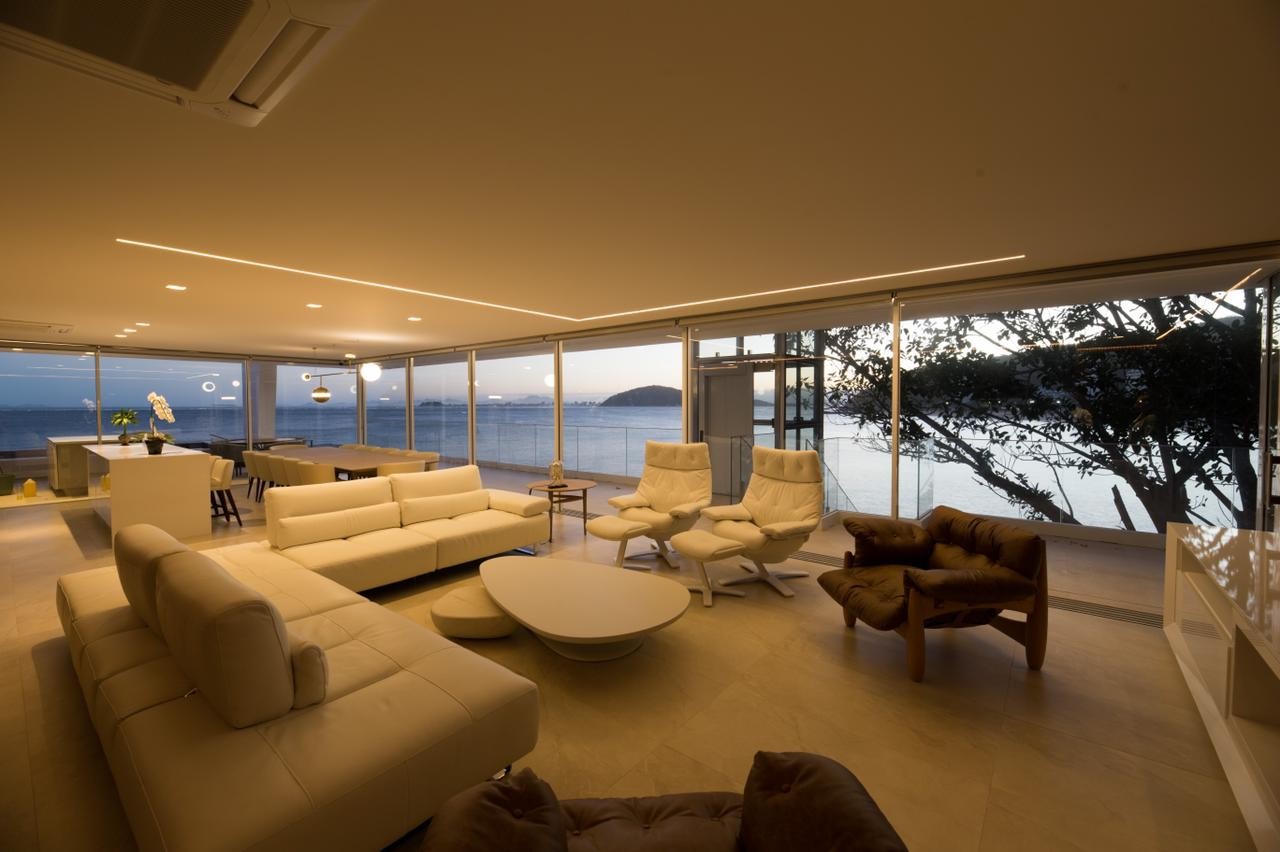Comfort glass and wellbeing

It’s more than smooth, sleek style: how glass provides comfort
Advances in glass production mean your project will deliver aesthetically and can help meet or even exceed energy guidelines in your part of the world. But there’s a more tangible, “human” side to glass performance. Like how glass allows you to sit, cozy, next to an expansive view of a raging blizzard. How it bathes classrooms with natural light and helps to improve learning. And how it can withstand high impacts to reduce the risk of injury.
Thermal comfort
Room temperature contributes hugely to how comfortable you are when you walk into a room. It’s most comfortable when the temperature difference between ambient air and the adjacent wall and window surface is no higher than 5 °C/ 41 °F.
State-of-the-art thermal insulation glazing delivers “transparent insulation” by increasing the glass’ interior surface temperature to help minimize unpleasant drafts and retain heat. This also supports the building’s energy efficiency as insulating glass reduces heat loss by reflecting heat back into the room. Thus, cold temperatures won’t deter you from sitting or working next to a window.
Solar control
Too much heat, however, can also make a space intolerable. As we continue to see larger expanses of glass in building design, it’s critical that solar control glass helps create spaces where occupants work, learn or play in comfort.
When solar radiation strikes the glass one part of the radiation passes through unhindered, a portion is reflected back into the environment and the rest is absorbed. You can help control the amount of solar energy transmitted into interiors through the selection of glass and coatings.
High performance glass can also help manage glare and ultraviolet light transmission, while still bringing you the comfort and beauty of abundant natural light. Although you can’t see UV light, long-term exposure can also cause furniture to fade.
Natural light
The benefits of natural light and outside views are well-documented; from test score improvements and retail sales increases, to reductions in pain medication. The effect of solar protective glass on energy transmission helps manage interior temperatures so we may enjoy these benefits.
High-performance glass with a high light to solar heat gain ratio, or selectivity, means it’s possible for buildings in warmer climates to enjoy the benefits of natural light with less risk of overheating the interiors.
Meanwhile, the wide portfolio of multifunctional products offers solutions for cooler climates as well, where the right choice of high-performance glazing allows buildings to capitalize on the solar heat gain during sunny but cold days.
In addition to being good for us, abundant daylighting can also be good for a building’s energy efficiency. Reducing reliance on artificial light and helping to keep interiors comfortable can improve the building’s energy performance.
Acoustic comfort
We are surrounded by sound. Unfortunately, what many might consider pleasant, such as birds singing or laughter, is frequently drowned out by less welcome noise. According to the World Health Organisation, excessive noise can disturb sleep, cause cardiovascular and psychophysiological problems and reduce performance.

Glass can help us live and work comfortably, despite the surrounding environment. Sound is transmitted through glass because the molecules compress against each other and spread that compression as a wave. The intensity of the pressure and its fluctuations, the sound level, is measured in Decibels. A glass noise reduction capacity rating of 40 dB will reduce 70 dB of outside noise (for example a vehicle’s sound) to 30 dB inside the building.

Safety & Security
Performance glass can also provide safety and security while still offering transparency and beauty.
Glass gains strength when it is heated then rapidly cooled. This produces a permanent tension in the surface that strengthens it. It’s important to note that float glass must be cut and fabricated before the heating process.
Tempered glass
Tempered (safety) glass is around 4 x stronger than annealed (standard) glass. When damaged, it is designed to break into small pieces. Application examples are showers and areas with high foot traffic.

Heat-strengthened glass
Heat-strengthened glass is around 2 x stronger than annealed glass and resists thermal stress and edge damage. When damaged, it is more likely to stay in its frame. Heat-strengthened glass is commonly used to reduce the risk of thermal breakage in laminated glass applications.

Laminated glass
Laminated glass delivers safety through the permanent connection of two or more single pane glasses with sticky, elastic, highly tear-resistant interlayers. When damaged, the fragments adhere to the interlayer, so the glass will usually retain its stability and stay in it’s the frame. Laminated glass can significantly improve the window’s ability to withstand or resist breakage from high winds, flying debris and intruders.



.jpg.transform/rendition-1280-keep/img.jpg)




